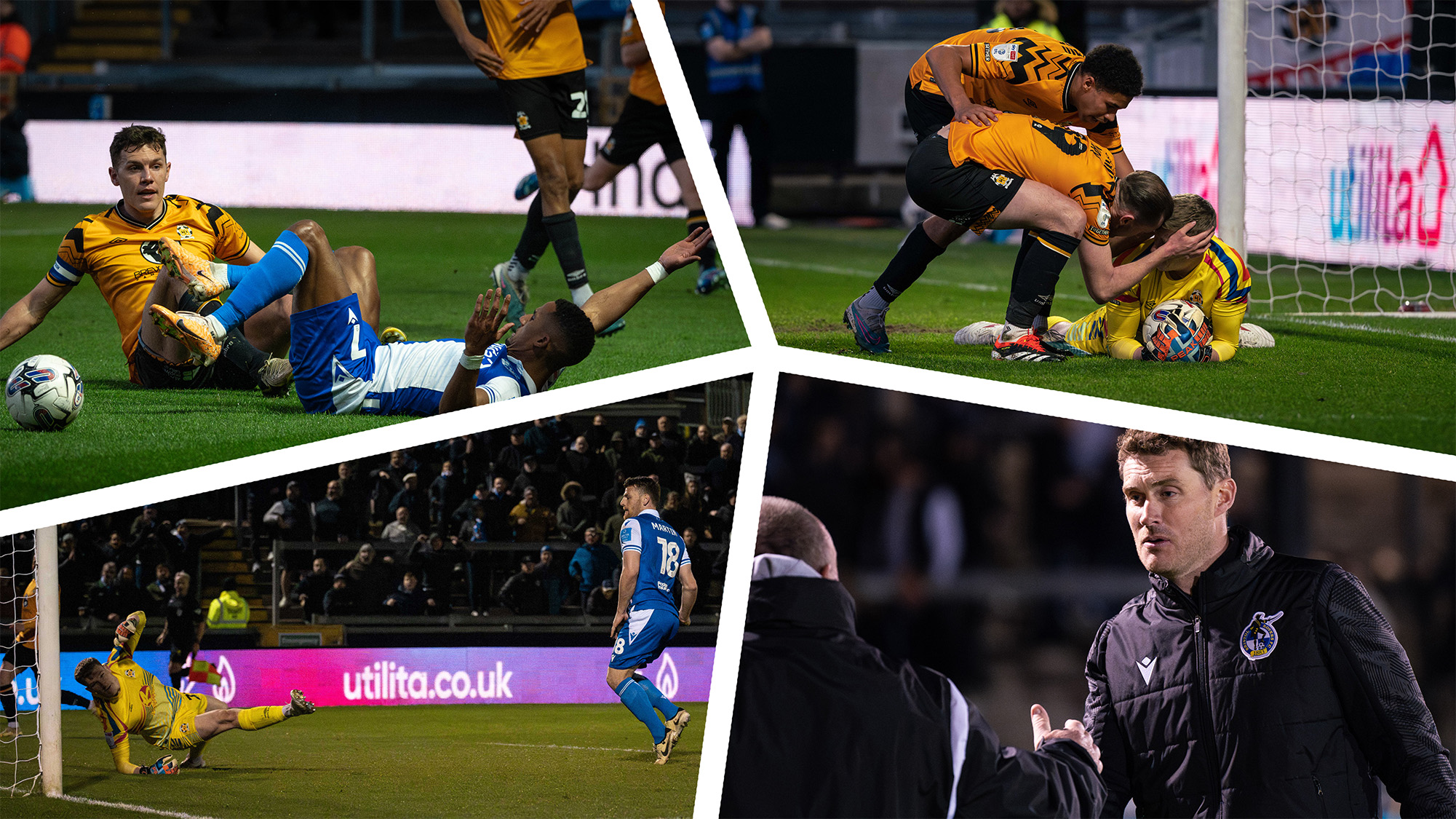
The lightning-fast pace of a football game isn't just a challenge for photographers: it's a challenge for the best cameras for sports photography, too. Even the latest and greatest DSLR and mirrorless cameras are pushed to their very limits by sports photographers intent on capturing every major moment in a game.
The key to photographing football is using a fast shutter speed to freeze the action, and the right AF mode to pick out the player with the ball – and not the 21 other players on the pitch… High ISOs are unavoidable – especially under floodlights – and reading the game is essential if you don't want to miss the big moments.
A huge thank you to Bristol Rovers, who invited me to the Memorial Stadium to capture their league match against Cambridge United last season. I certainly wasn't robbed of the action, with a first-half penalty saved by the opposition before Chris Martin slipped the ball past the keeper in the 87th minute, sealing a 1-0 victory for 'The Gas'!
But it doesn't matter whether you're shooting an EFL or junior football game – most of the same tips and tricks apply. Here are my top tips for photographing football...

1. Use a long lens

It doesn't matter whether you're photographing a grassroots game or an EFL or MLS game: the best lens for sports photography is a long lens that will cover the distance of the pitch. A reach of 400mm (full-frame equivalent) is ideal. I like the versatility of a zoom. You could use a faster prime, but you'd need two bodies loaded with two different prime lenses to react quickly enough during the game. A monopod is essential, too: it gives you freedom of movement, but will take the weight of your heavy super-telephoto lens, since you'll be shooting for over 90 minutes.
2. Camera settings

Because football is such a fast-paced sport, using some automatic settings is recommended. I paired Manual mode with Auto ISO; since I was shooting wide-open constantly, this meant I only had to worry about the shutter speed. Ideally, you don't want to dip below 1/1000 sec. If you're shooting under floodlights, you're going to reach some high ISOs, but this is unavoidable. At the end of the day, sharp shots trump noise. Thankfully, the latest Nikon DSLRs and mirrorless cameras perform really well in low light.
3. Football focus

With multiple players on the pitch, a reliable AF mode is essential. Although the latest Z cameras boast incredible subject-detection capabilities, there's simply too much going on for even these advanced AI algorithms to handle. Whether you’re shooting on a DSLR or mirrorless, I recommend using single-point AF or dynamic-area AF. Aim for the ball carrier's head. If you find AF switches too quickly when another player passes in front of your subject, increase the 'Blocked shot AF response' slider in the Custom Setting Menu (a3).
4. Capture the moment

You can't expect to capture every moment – but you can certainly try. The first step is to find a good vantage point. Somewhere along the goal line, towards either corner is a good place to start. Try to shoot from the end where you anticipate the most action, too. Auto ISO and burst mode will aid your reactions and timing respectively. Pay close attention to spectators: if they start to get excited, there's a good chance something is on. Finally, read the game: if a team favors getting the ball to a particular player, make a mental note.
5. Tell a story

It's tempting to focus all of your efforts on capturing one outstanding moment. But if all you manage to capture is that one bicycle kick, you'll have a great image and no story. Shooting a football game is about capturing a narrative; that means the big (and little) moments that make every game of football unique. Look out for on-pitch battles, interactions with the ref, animated fans, celebration highs and frustration lows, mid-air battles and more. If you can look back on your images in a year's time and remember the game, you've nailed it.
6. Noise reduction

If you're shooting an evening game, noise reduction during editing is a necessity. Thankfully, Adobe Lightroom CC's new AI-powered Denoise feature is a dab hand at removing unsightly noise. You'll find it in the Detail panel. Simply click the lozenge and wait for the preview in the Enhance Preview window to load. Too much noise reduction can remove important details and make human subjects look a little like plastic dolls, so make sure you reduce the Amount slider accordingly to prevent this from happening.
7. Take some portraits

A 70-200mm f/2.8 is an ideal accompaniment to the super-telephoto lens you'll use for most of the game. This shorter, but much faster, optic is ideal for capturing intimate player portraits as they come on or off the pitch, or go to greet fans following a substitution. If you own two Nikons, bring both to the game, and load one with your super-tele and one with your fast zoom, so you can switch at will.

If you're interested in football photography, you might also be interested in the best monopod and the best budget telephoto lenses.







